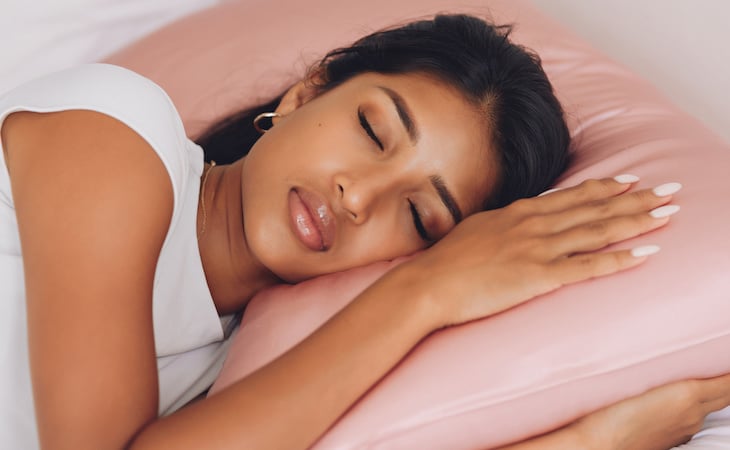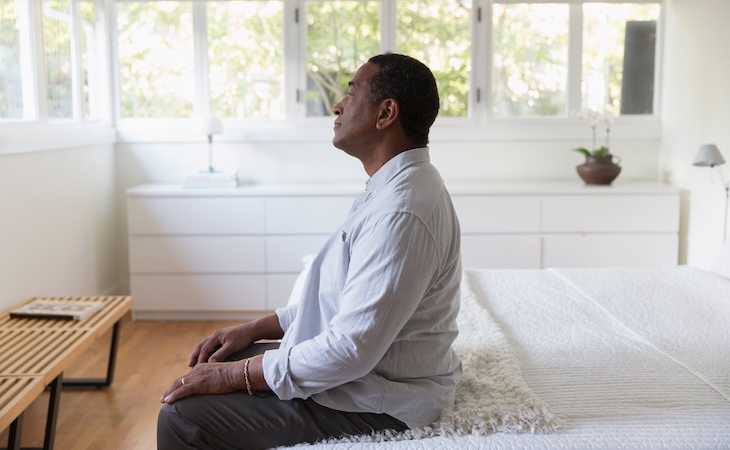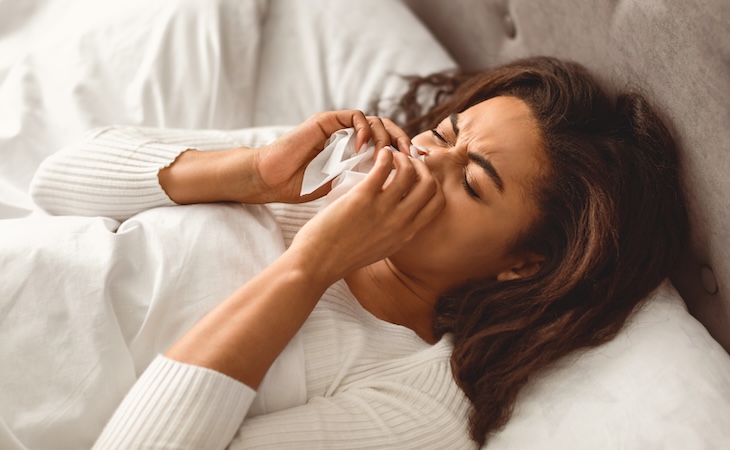There’s no denying sleep is good for you. After all, you can’t live without it—and the better your sleep, the more you’ll optimize your health as well as things like your productivity and fitness endeavors.
Surprisingly, though, there’s one downside to sleep, and that’s wrinkles. (Call them sleep wrinkles, if you will.)
“Sleep can significantly impact facial wrinkles, particularly if you’re a side or stomach sleeper,” says Geeta Yadav, MD, board-certified dermatologist and founder of FACET Dermatology in Toronto.
You can’t stop sleeping, of course, but you can take steps to prevent sleep wrinkles. Here’s how.
What are sleep wrinkles?
If you’ve ever had a massage or fallen asleep on a corduroy couch, then you’ve no doubt wound up with lines and rings all over your face. Fortunately, those lines are temporary, namely because the time you spend in those situations is minimal—fleeting at best, Yadav says.
Yet if you were to assume those positions every night for hours at a time, then those wrinkles would become permanent—which is exactly what happens with sleep wrinkles.
“Sleep wrinkles form over time because the stress on the facial tissues is repetitive and consistent—every night for hours at a time,” Yadav says. “The pressure on and distortion of those tissues can cause wrinkles to form and exacerbate them.”
It makes sense that people who sleep on their stomach or side are most prone to sleep wrinkles on their face. But side sleeping can come with another downside, namely wrinkles on the neck and chest.
“The bend of the neck and the position of the breasts create creases along the neck, sometimes referred to as ‘necklace lines,’ and between the breasts,” Yadav says.
Of course, your sleep position is just one cause of sleep wrinkles. The fabric you sleep on also contributes as cheap or poorly-made linen woven with artificial fibers often tugs at your skin.
What’s more, having dry and/or mature skin can make you more prone to sleep wrinkles. “The lack of moisture in dry skin and the loss of elasticity in mature skin make it less resilient and able to bounce back from sleep wrinkles,” Yadav says.
Let’s be honest too: Sleep wrinkles are simply a fact of life, naturally forming over time. Considering how much time you spend sleeping over the course of your life, it’s little wonder these wrinkles develop.
How to prevent sleep wrinkles
You can’t stop sleeping or aging, but you can employ a few simple strategies to lessen the impact of sleep on your skin.
Consider your sleep position
If sleeping on your side and stomach increases the likelihood of wrinkles, then it makes sense that you should sleep on your back instead. Just keep in mind that some individuals, like those with breathing issues such as sleep apnea, should avoid sleeping on their back, Yadav says.
If you’re not one of them, then you can train yourself to sleep on your back. Otherwise, use a wedge pillow so you can sleep in an elevated position to support your breathing as well as prevent wrinkles, she adds.
Try a neck pillow
Consider swapping your regular pillow for one that supports your neck. “This will help you avoid turning at night,” says Trina Renea, medically trained celebrity esthetician and owner of Facial Bungalow in Los Angeles.
Switch to silk
The best pillowcase to keep your face less wrinkled is one made from silk. “Silk will prevent dehydration of the skin that can exacerbate wrinkles as well as allow skin to move more smoothly along the fabric rather than drag as you sleep,” Yadav says. Not into silk? Try satin, Renea says.
Use a breast pillow
If you want to prevent sleep wrinkles between your chest, then buy one of these pillows. It’s worn like a harness and keeps your breasts separated while you sleep versus being smooshed together, which causes creasing, Yadav says.
FAQs
Do wrinkles come from sleeping on your side?
Sleeping on your side is one of the sleep positions that can create wrinkles. What’s more, dermatologists can even tell if you’re a side sleeper not only because of the wrinkles but also the volume of your face. “The compression of tissues can cause that side of the face to appear flatter than the other,” Yadav says.
How do you get rid of sleep wrinkles?
Sleep wrinkles, especially along the neck and chest, can be hard to treat. Worse? “Without dermatological intervention, be it through high-quality skincare or professional treatments, all wrinkles are permanent,” Yadav says.
Consult your dermatologist about treatments and products that stimulate collagen production, which can help smooth the wrinkles from the inside out, she adds. You can then help improve texture with chemical exfoliants and resurfacing lasers. Some fillers like Hyperdilute Radiesse can even plump up lines from within.
Of course, it goes without saying that discontinuing the behavior that’s causing sleep wrinkles will keep them from getting worse and may even diminish them to some degree, she says. If you see any temporary marks in the morning, you can massage the tissue, which will help marks fade.
Sleep deprivation can do a number on your complexion. Here’s how to get your beauty sleep and wake up looking refreshed.




